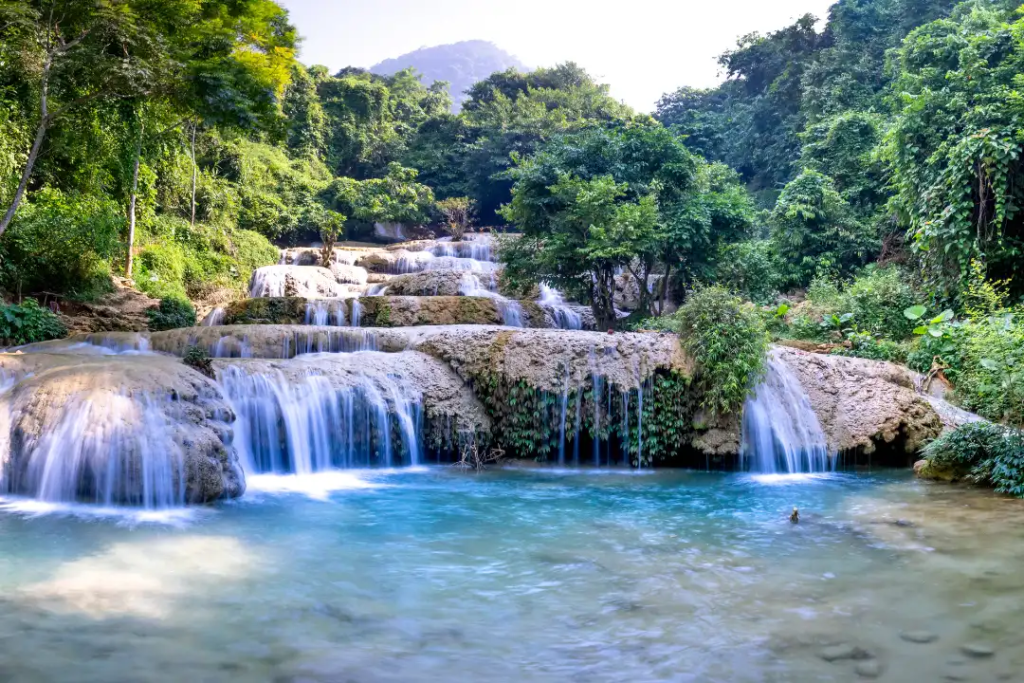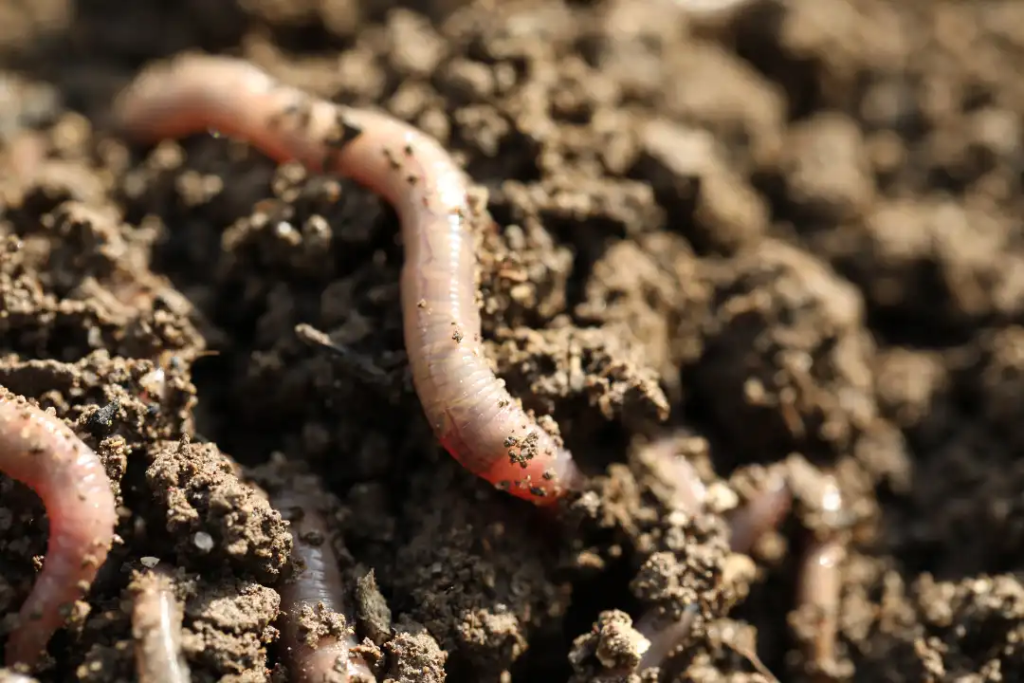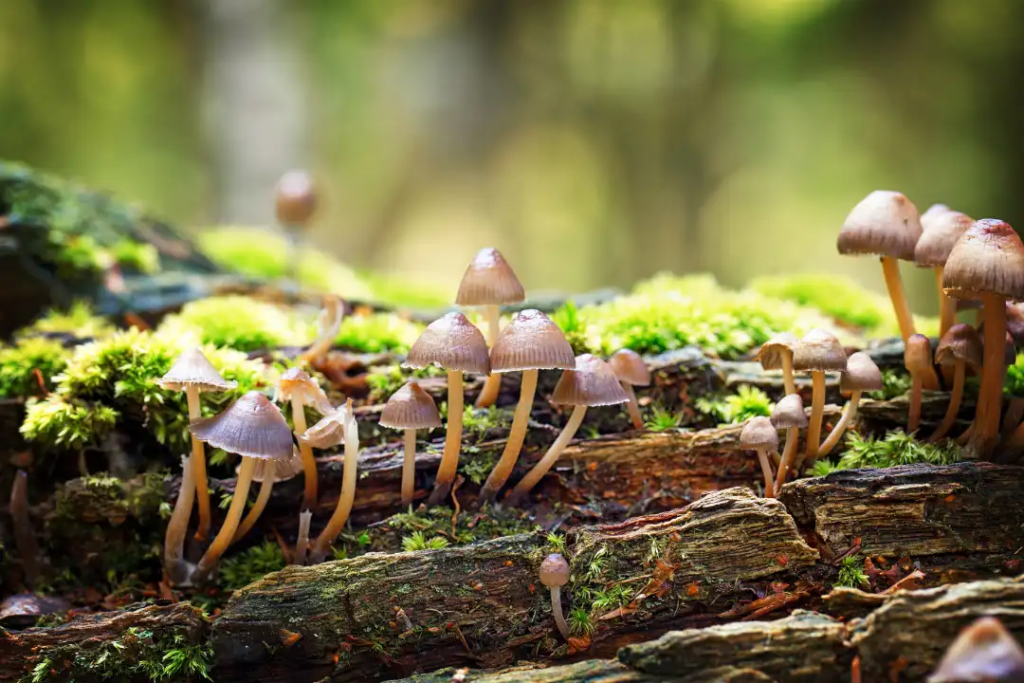Tropical rainforests are dense, biodiverse ecosystems near the equator, characterized by high levels of rainfall throughout the year. They are found in regions of Central and South America, Africa, Southeast Asia, and the Pacific Islands.
These forests are often called the “lungs of the Earth” due to their capacity to absorb and store large amounts of carbon dioxide, a greenhouse gas responsible for climate change.

Tropical rainforests are typically found in areas with high average temperatures and high humidity. The climate is characterized by minimal seasonal variations, with consistently warm temperatures ranging from 70°F to 85°F (21°C to 30°C).
Rainfall is abundant, usually exceeding 100 inches (250 cm) annually, creating a perpetually wet environment.
I. Tropical Rainforests Producers
Producers play a vital role in tropical rainforests, converting sunlight, carbon dioxide, and nutrients into organic matter through photosynthesis.
A. Definition and role of producers
In any ecosystem, producers play an essential role in sustaining life. Producers, also known as autotrophs, are organisms capable of converting inorganic substances into organic compounds through photosynthesis or chemosynthesis.
They serve as the foundation of the food chain, transforming sunlight, water, and carbon dioxide into energy-rich molecules, such as glucose, which then become accessible to other organisms.
With their dense and diverse vegetation, tropical rainforests harbor a wide range of producers. These ecosystems exhibit unparalleled biodiversity, allowing for the proliferation of unique species of plants that serve as primary producers.
B. Primary producers in tropical rainforest ecosystems
1. Trees as dominant producers
Trees are the dominant and most recognized primary producers in tropical rainforests. They grow tall and have adapted various mechanisms to capture sunlight efficiently. Their leaves are often broad and feature a large surface area, maximizing their exposure to sunlight for photosynthesis.
The immense diversity of tree species in tropical rainforests plays a vital role in the overall stability and functioning of the ecosystem. Different tree species possess unique characteristics that enable them to occupy specific niches within the forest.
For example, emergent trees are exceptionally tall and stand above the forest canopy, allowing them to capture higher levels of sunlight. They are a substantial energy source and provide shade and shelter for other plants and animals.
Examples of emergent trees include the kapok tree (Ceiba pentandra) and the Brazilian nut tree (Bertholletia excelsa).
In addition to emergent trees, canopy trees form the dense upper layer of the forest. They compete for sunlight and space, reaching impressive heights to gain an advantage in the resource race.
Canopy trees, such as mahogany (Swietenia macrophylla) and dipterocarps, create an intricate network of branches and leaves, creating a microhabitat suitable for epiphytes, understory plants, and animals.
2. Understory plants and their importance
Understory plants refer to the vegetation found beneath the forest canopy but above the forest floor. While they receive considerably less sunlight than the canopy trees, these plants remain crucial as primary producers in tropical rainforests.
Understory plants have adapted to low light levels by featuring larger leaves to maximize light absorption and be more tolerant of shade.
They also often grow under limited soil nutrients, allowing them to thrive in the highly competitive rainforest environment. These plants play an essential role in nutrient cycling and the overall stability of the forest ecosystem.
Epiphytes, a unique category of understory plants, grow upon other plants without parasitizing them. They obtain moisture and nutrients from the air, rain, and accumulated debris in their surroundings rather than relying on the forest floor or their host plants.
Epiphytes, such as bromeliads and orchids, attach themselves to trees, branches, or rocks, creating vertical gardens in the rainforest. They play a crucial role in providing additional habitat and moisture retention, enhancing the overall biodiversity of the ecosystem.
Additionally, understory plants contribute to the forest ecosystem’s resilience by acting as a buffer against environmental disturbances. Their presence helps regulate temperature and humidity, prevent soil erosion, and provide shelter and food for various organisms.
Some well-known examples of understory plants in tropical rainforests include ferns, mosses, vines like lianas, and various herbaceous plants.
I. Tropical Rainforests Consumers
Consumers in tropical rainforests play an important role in maintaining the delicate balance of these ecosystems. They are diverse organisms that obtain their energy and nutrients by feeding on other living organisms or their remains. Let’s explore some of the key consumers found in tropical rainforests:
A. Definition and types of consumers:
Consumers in tropical rainforests are organisms that obtain energy by consuming other organisms. They play an essential role in the ecosystem by transferring energy and nutrients through different trophic levels. There are three main types of consumers:
- Herbivores: These primary consumers feed on plants and plant materials. They are further classified into different categories based on their feeding habits and adaptations.
- Carnivores: These secondary and tertiary consumers feed on other animals. They can be further classified based on their position in the food chain and the types of prey they consume.
- Omnivores: These consumers have a mixed diet, feeding on plants and animals.
B. Herbivores in tropical rainforests:
- Insects as primary herbivores: Insects are the most abundant and diverse group of herbivores in tropical rainforests. They play a crucial role in consuming plant material and regulating plant populations. Insects have various feeding adaptations, such as chewing mouthparts, sucking mouthparts, or specialized structures to extract plant sap.
- Mammalian herbivores and their impact: Mammalian herbivores in tropical rainforests include primates, ungulates (hoofed animals), and small mammals. They have different feeding strategies and depend on various plant parts for nutrition. The browsing herbivores feed on leaves and tender shoots, while the grazing herbivores consume grasses and low-growing vegetation. These herbivores contribute to seed dispersal and nutrient cycling in the ecosystem.
C. Carnivores in tropical rainforests:
- Apex predators and their significance: Apex predators are the top predators in the food chain and significantly impact the ecosystem. In tropical rainforests, apex predators include large cats like jaguars, giant snakes like anacondas, and birds of prey like harpy eagles. These predators help regulate the population of lower trophic levels and maintain the overall balance in the ecosystem.
- Carnivorous mammals and reptiles: Tropical rainforests also host various carnivorous mammals and reptiles. These include species like ocelots, tigers, crocodiles, and snakes. Carnivorous mammals and reptiles play an important role in controlling herbivore populations, contributing to nutrient cycling through their scavenging activities, and maintaining the overall biodiversity of the ecosystem.
Overall, consumers in tropical rainforests form a complex web of interactions, contributing to the functioning and stability of the ecosystem. Each type of consumer has its ecological role and impact, highlighting the interconnectedness and interdependence of organisms within this unique ecosystem.
III. Tropical Rainforests Decomposers
Tropical rainforests are known for their incredible biodiversity, and an essential component of this ecosystem is the presence of decomposers.
Decomposers are important for breaking down organic matter and recycling nutrients in the rainforest ecosystem.
A. Role and Importance of Decomposers
Decomposers obtain nutrients by breaking down dead organic material, such as fallen leaves, animal carcasses, and other plant debris.
By decomposing organic matter, they release carbon, nitrogen, phosphorus, and other essential nutrients into the ecosystem, making them available for other organisms. Hence, decomposers are vital for nutrient cycling in the rainforest ecosystem.
Additionally, decomposers help in organic matter decomposition, which aids in the physical breakdown of dead material and the reduction of its organic content.
Without decomposers, organic matter would accumulate and hinder the growth of new plants and other organisms.
B. Detritivores as Primary Decomposers
Detritivores feed on dead organic matter, acting as primary decomposers in the rainforest ecosystem. They play a important role in decomposition and are mainly represented by invertebrates, fungi, and bacteria.
1. Invertebrate Detritivores and Their Functions
Invertebrate detritivores, including termites, beetles, millipedes, and earthworms, are abundant in tropical rainforests. Their specialized mouthparts and digestive systems allow them to break down organic matter.
Termites, for example, are particularly important in tropical rainforest ecosystems because they break down cellulose-rich plant material.

They possess unique enzymes produced by symbiotic microorganisms in their gut, allowing them to digest complex carbohydrates found in plants. Thus, termites greatly aid in the decomposition of dead plant material.
Beetles, millipedes, and earthworms also contribute significantly to decomposition in the rainforest. They help by physically breaking down organic matter, increasing the surface area for other decomposers, and facilitating decomposition.
2. Fungi and Bacteria in the Decomposition Process
Fungi and bacteria are microscopic decomposers that play critical roles in breaking down organic matter and recycling nutrients in the tropical rainforest ecosystem.
Fungi, such as mushrooms, yeasts, and molds, are efficient decomposers. They produce enzymes that break down complex organic compounds, allowing them to extract nutrients from dead organic matter.

Fungi also have a highly branched network of filaments called mycelium, which extends through the soil and decomposing material, enabling them to absorb nutrients efficiently.
Bacteria are another group of microorganisms involved in decomposition. They secrete enzymes that break down organic matter, converting it into simpler compounds that other organisms can absorb.
The rainforest soils are home to a wide variety of bacteria, which play an important role in the process of decomposition. These bacteria are highly diverse in nature and contribute significantly to the overall activity in the region.
Fungi and bacteria are interconnected in a symbiotic relationship, where fungi provide a physical structure for bacteria to grow and thrive. In return, bacteria enhance decomposition, releasing nutrients that fungi can absorb.
Without decomposers, the rainforest ecosystem would be unable to sustain its high levels of biodiversity. Therefore, understanding decomposers’ functions and importance is crucial for effectively conserving and managing tropical rainforest ecosystems.
IV. Interactions between Producers, Consumers, and Decomposers
A. Food chains and webs in tropical rainforests:
Tropical rainforests support incredibly diverse ecosystems with complex food chains and interconnecting food webs. These ecosystems involve various plant and animal species, each occupying different trophic levels.
- Producers: The primary producers in tropical rainforests are the plants, particularly the tall trees that make up the forest canopy. These plants utilize sunlight through photosynthesis to convert carbon dioxide and water into organic compounds, such as glucose. They form the basis of the food chain by providing energy to other organisms.
- Primary consumers: Herbivores feed directly on the producers. Tropical rainforests include a wide range of animals like insects, birds, mammals, and reptiles. Some common examples are monkeys, sloths, and butterflies, which rely on leaves, fruits, and flowers for sustenance.
- Secondary consumers: These organisms feed on primary consumers. Examples in tropical rainforests include snakes, big cats like jaguars, and birds of prey like eagles. They are usually carnivores or omnivores, consuming primary consumers as a source of energy.
- Tertiary consumers: These organisms are at the top of the food chain and feed on secondary consumers. In tropical rainforests, they can include large predators like crocodiles and anacondas and apex predators like tigers. They play a crucial role in maintaining the balance of the ecosystem.
- Decomposers: Decomposers break down dead organic matter into simple inorganic compounds, including plants and animals. They are primarily bacteria and fungi. Decomposers play a vital role in recycling nutrients back into the ecosystem, ensuring the availability of essential elements for plants and other organisms.
B. Nutrient cycling and its relation to decomposers:
Nutrient cycling is the process by which essential elements such as carbon, nitrogen, and phosphorus are continuously recycled within an ecosystem. Decomposers, as mentioned earlier, are crucial players in this process.
- Decomposition: When plants and animals die, decomposers decompose their organic material into simpler compounds. Decomposers release nutrients back into the soil through decomposition, making them available for absorption by plant roots. Without decomposers, these essential nutrients would remain locked in dead organic matter.
- Nutrient uptake by producers: As primary producers, plants take up the recycled nutrients from the soil and use them to grow and develop. They require nitrogen and phosphorus for various physiological processes, such as photosynthesis and protein synthesis.
- Consumption by consumers: Primary consumers feed on the producers, obtaining the nutrients stored within them. In tropical rainforests, the consumption of plants is a vital source of energy and nutrients for diverse animal species.
- Nutrient transfer through trophic levels: As consumers consume other organisms, they assimilate the nutrients stored in their prey. This nutrient transfer occurs as energy moves up the food chain. The decomposers further recycle nutrients from the waste products and remains of consumers, completing the nutrient cycling loop.
In summary, decomposers play a important role in tropical rainforests by decomposing dead organic matter and recycling nutrients into the ecosystem. This nutrient cycling ensures the continuous availability of essential elements for plant growth, supporting the diverse food chains and webs within this complex ecosystem.
Frequently Asked Questions
Producers: Trees, vines, mosses, grasses, tropical fruit trees, decomposers
Consumers: Monkeys, birds, Jaguars, dolphins, giant fish
Decomposers: invertebrates, fungi, and bacteria.
Termites, slugs, scorpions, worms, and fungi, thrive on the forest floors.
The four main decomposers in an ecosystem are bacteria, fungi, worms (or other macroorganisms), and detritivores.
Sloths, butterflies, macaws, and monkeys are some of the common examples of consumers in tropical rainforests.
